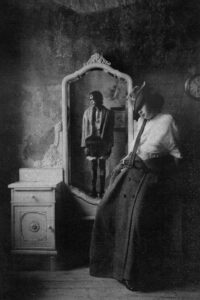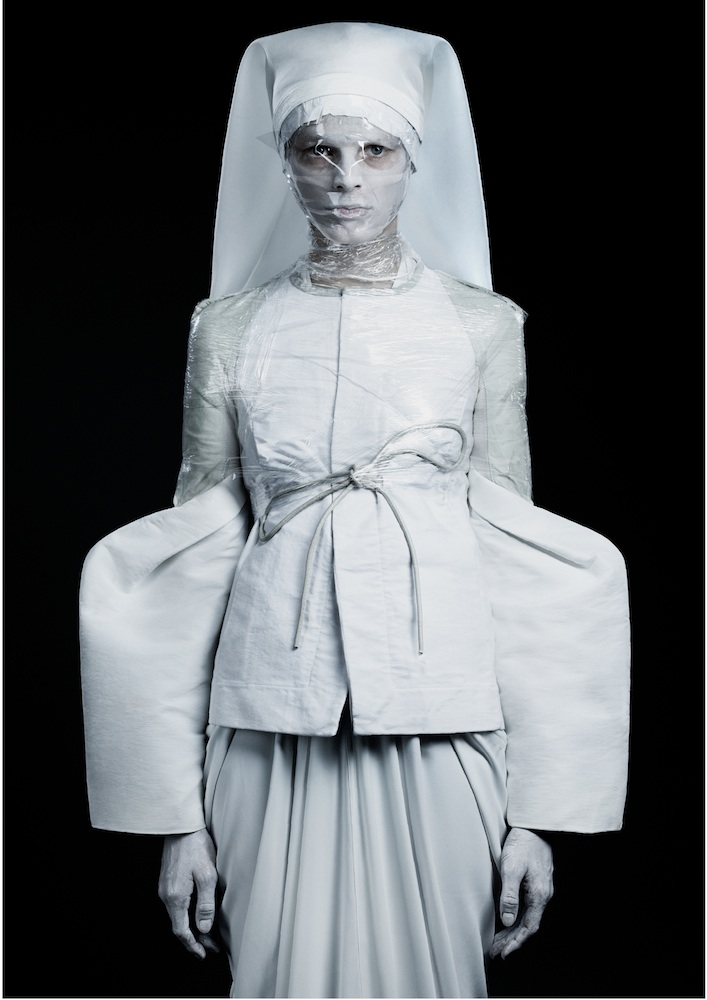
The Evolution of Avant-Garde in Fashion
Tracing avant-garde’s path from its revolutionary roots of Elsa Schiaparelli, Rei Kawakubo, and McQueen to today’s branches of gothic elegance.
What do you dress for? Maybe you roll out of bed to suit up in your shiny armour, complete with metal bangles and silver eye shadow, ready for whatever battle you will face on the way to work. Or perhaps you dress to feel lucid, like a shadow slipping through the cracks of society, obeying none of the norms constricting your style. You could simply like bulky silhouettes or the color black. The avant-garde marries all these ideals, creating a shadowy symphony of playful fashion.
This way of dressing was born long before Diesel’s stark contact lenses or the meat dresses that shocked the red carpet. Its vast history is embellished with some of the world’s most daring minds like Alexander McQueen and Yohji Yamamoto, creating a community of misfits along the way. Join L’Abbeye on a gothic journey, from the origins of avant-garde fashion to the way it continues to shape style today.
Defining the Avant-Garde
Derived from the French term for “advance guard,” avant-garde originally described radical thinkers and creators ahead of their time, challenging the mainstream. In fashion, it signals experimentation, anti-commercialism, and garments that often provoke as much as they impress.
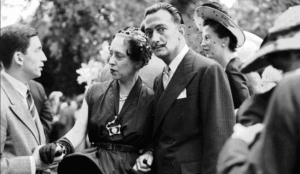
Dali and Elsa Schiaparelli 1949
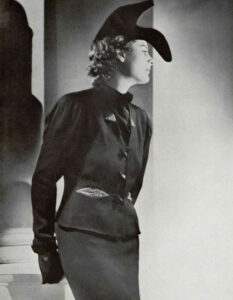
Schiaprelli Chapeau Chaussure – Photographie de Georges Saad publiée dans le numéro d’octobre 1937 de l’Officiel de la Mode et de la Couture.

Schiaparelli Lobster Dress 1937
Elsa Schiaparelli and Surreal Style
Before it had a name, avant-garde fashion had a face: Elsa Schiaparelli. In the 1930s, she broke fashion norms by collaborating with surrealist artists like Salvador Dalí and Jean Cocteau. Her infamous lobster dress and shoe hat were not gimmicks, they were commentaries on the state of style.
“I myself am no longer sure of what is real and what is not,” Schiaparelli once said, a line that could be stitched across the lining of the entire avant-garde movement. Her work transformed clothing into art, performance, and satire decades before designers would walk that same line on runways in Paris, London, and Tokyo.

Rei and yohji by Kazumi Kurigami 1982

Rei Kawakubo FW 1997
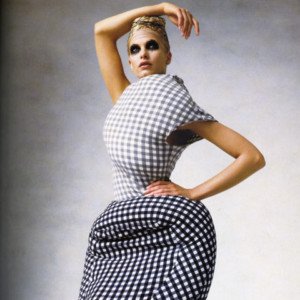
Rei Kawakubo FW 1997

Yohji Yamamoto Fall 2015
Kawakubo and Yamamoto Disrupt Paris
In 1981, Rei Kawakubo and Yohji Yamamoto arrived in Paris and turned the fashion world on its head. Their debut collections were monochromatic, asymmetrical, and worn-in, what critics at the time rudely dubbed “Hiroshima chic.” But there was purpose in the discomfort. Kawakubo, founder of Comme des Garçons, did not seek to flatter the body but to question it.
“What’s good-looking anyway?” she told The New Yorker in 2005. “I don’t care about that.”
Her Fall/Winter 1997 show, Body Meets Dress, Dress Meets Body, featured padded lumps and distorted curves, a direct challenge to beauty standards and Western ideals of femininity.
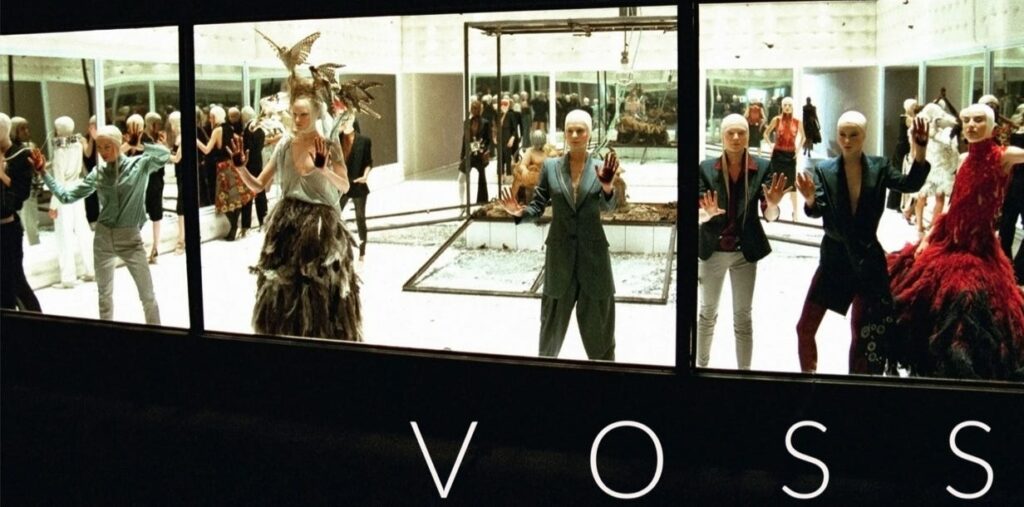
Alexander Mc Queen VOSS SS01
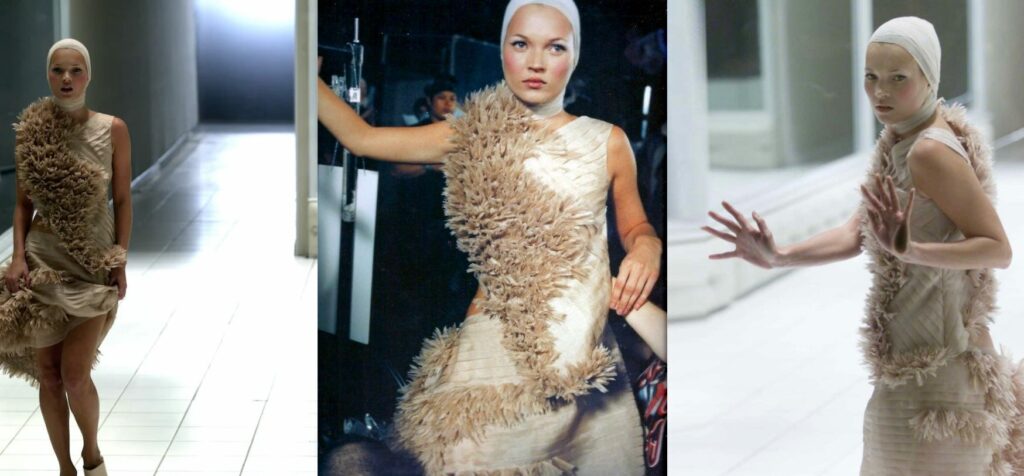
Kate Moss for Alexander Mc Queen VOSS SS01
McQueen Makes History
It is hard not to know about Alexander McQueen. His theatrical and dramatic garments have cemented themselves in fashion history, carving his bold genius into the mood boards of emerging designers of all generations. His shows were not just models and fabric, but cinematic, political, and emotional performances. One of the most influential avant-garde shows was Voss, his Spring/Summer 2001 collection.
The show began with the audience facing a mirrored box, seeing only their reflections for over an hour. When the lights finally dropped, the mirrors turned transparent, revealing a sterile padded room. Models walked like inmates in shredded chiffon, moth-veiled masks, and headdresses made of broken materials. It was less a runway than a psychological breakdown in motion, similar to the roaring flames of a fire you could not look away from.
The finale revealed a two-way mirrored box inside the set, which cracked open to expose a nude Michelle Olley reclining on a chaise, surrounded by live moths. The scene, inspired by Joel-Peter Witkin’s Sanitarium, was a jarring meditation on voyeurism, beauty, and control.
“I want people to be afraid of the women I dress,” McQueen said.

Iris Van Herpen AW2010
Beyond the Runway
While McQueen and Kawakubo made headlines, others like Martin Margiela and Ann Demeulemeester quietly redefined fashion from the shadows. Margiela famously hid his face, spotlighting solely his deconstructed garments and adding mystery to his craft. Demeulemeester’s minimalist tailoring and literary references gave the avant-garde a softer edge.
Then came Iris van Herpen with her surreal futurism. Her 2010 Crystallization collection featured 3D-printed dresses that looked like frozen water mid-splash. “I am interested in where fashion becomes art and where art becomes science,” she said in an interview with Dezeen. Her work became a sculptural masterpiece, combining technology with the edge of avant-garde.

Rick Owens by Danielle Levitt 2019
Where Avant-Garde Lives Now
Today, the avant-garde still pulses through the industry’s veins. Gothic glamour and surrealism have made a return, filtered through new voices like Robert Wun, whose sculptural gowns and razor-sharp tailoring feel like armor for the emotionally raw. Ludovic de Saint Sernin turns heads with sea-inspired guest collections for Jean Paul Gaultier, complete with rope and exceptional draping.
Even more commercial labels borrow from the avant-garde toolbox. Rick Owens stages cult-like runways with platform-clad models stomping through fog, while Balenciaga blurs satire, streetwear, and high art. Diesel’s recent shows, with fake paparazzi pits and melted-skin bodysuits, hint at how distortion has gone mainstream.
by Bethany Suarez


